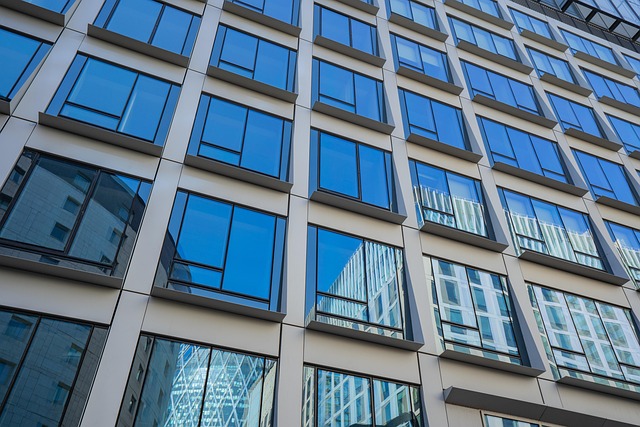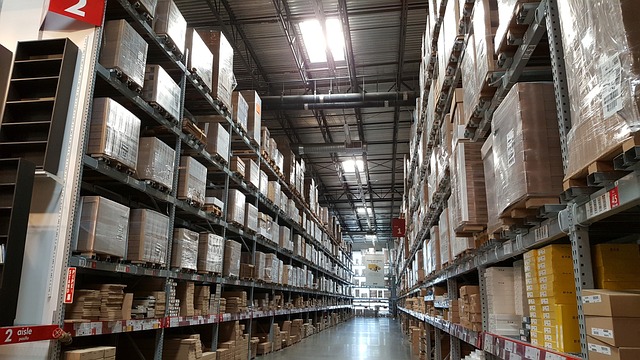Industrial air curtains, powered by motion sensor technology, are versatile solutions for maintaining controlled environments in manufacturing, warehousing, and cold storage. They act as robust barriers, preventing external elements from infiltrating interior spaces while offering benefits like temperature regulation, energy efficiency through HVAC integration, and enhanced productivity. These smart systems automatically adjust airflow based on occupancy, enhancing climate control and reducing energy consumption, making them ideal for large opening protection, warehouse entrance protection, and loading dock security. Regular maintenance ensures optimal performance, with future prospects including enhanced integration with existing door systems and factory entrance heating mechanisms.
“Revolutionize your industrial space with the latest innovation in ventilation: integrated motion sensor-activated air curtains. This cutting-edge technology combines the efficiency of air curtains with advanced motion sensing, optimizing workflow and energy savings. The article explores the transformative potential of these smart systems, delving into their role, the evolution of motion sensors, and the numerous advantages they offer. From enhanced safety to improved productivity, discover how industrial air curtains with motion sensor activation are shaping modern manufacturing.”
- Understanding Industrial Air Curtains: Their Role and Benefits
- The Evolution of Motion Sensor Technology in Manufacturing
- Integrating Motion Sensors into Air Curtain Systems: A Novel Approach
- Advantages of Integrated Motion Sensor Activation in Industrial Settings
- Implementation, Maintenance, and Future Prospects of Smart Air Curtains
Understanding Industrial Air Curtains: Their Role and Benefits

Industrial air curtains play a pivotal role in maintaining controlled environments within various industrial settings. These advanced systems act as robust barriers, designed to prevent external elements from infiltrating interior spaces. By creating a powerful airstream, they effectively isolate areas, ensuring optimal conditions for critical processes. This is particularly valuable in manufacturing, warehousing, and cold storage facilities where maintaining specific temperatures and atmospheres is essential.
The benefits of industrial air curtains extend beyond simple temperature regulation. They serve as efficient solutions for warehouse entrance protection, loading dock security, and large opening protection in factories. These heavy-duty air curtains can also enhance energy efficiency by acting as part of industrial HVAC systems, reducing the need for excessive heating or cooling. Their versatility makes them indispensable for many manufacturing door systems, contributing to improved productivity and reduced operational costs.
The Evolution of Motion Sensor Technology in Manufacturing

The evolution of motion sensor technology has significantly transformed various industries, including manufacturing. Historically, factories and warehouses relied on traditional door systems for entry and exit, often requiring manual activation or set schedules. However, with advancements in automation, industrial air curtains have emerged as a game-changer in improving efficiency and safety. These innovative devices integrate sophisticated motion sensors that detect human presence or vehicle proximity, automatically activating powerful streams of air to create an airtight seal.
This technology offers numerous benefits for manufacturing facilities. Industrial air barriers provide effective warehouse entrance protection and large opening protection, ensuring a controlled environment while minimizing energy loss. They are ideal for applications like cold storage barriers and loading dock air curtains, where maintaining specific temperatures is crucial. Moreover, integrating motion sensors into industrial HVAC systems enhances overall efficiency by preventing unneeded energy expenditure during periods of low activity, making them an essential component in modern manufacturing operations.
Integrating Motion Sensors into Air Curtain Systems: A Novel Approach

Integrating Motion Sensors into Air Curtain Systems represents a novel approach in industrial ventilation solutions. This technology brings a new level of efficiency and convenience to various industrial settings, especially when paired with heavy-duty air curtains designed for large opening protection. By incorporating motion sensors, these advanced systems can automatically adjust airflow based on occupancy, significantly enhancing warehouse entrance protection or factory entrance heating scenarios.
In manufacturing door systems and cold storage barriers, the implementation of motion sensors acts as a game changer in industrial climate control. This feature is particularly beneficial in loading dock air curtains, ensuring optimal air circulation only when necessary, thereby reducing energy consumption. Moreover, these smart solutions can be seamlessly integrated into existing industrial HVAC systems, fostering a more sustainable and cost-effective operational environment.
Advantages of Integrated Motion Sensor Activation in Industrial Settings

Integrated motion sensor activation offers significant advantages in industrial settings where efficient and precise control is essential. These sensors allow for automatic operation of industrial air curtains, eliminating the need for manual intervention. This not only saves time but also ensures consistent performance, as the curtains can respond immediately to changes in the environment, such as the presence or absence of personnel or vehicles.
Furthermore, this technology contributes to enhanced safety and energy efficiency. By activating the air curtains only when necessary, it reduces unnecessary energy consumption, making it a smart choice for applications like warehouse entrance protection, heavy-duty air barriers in manufacturing door systems, and large opening protection in cold storage facilities. In loading docks and factory entrances, these sensors can help maintain optimal industrial climate control and prevent unwanted elements from entering, thereby improving the overall functionality of industrial HVAC systems.
Implementation, Maintenance, and Future Prospects of Smart Air Curtains

The implementation of industrial air curtains with integrated motion sensor activation represents a significant advancement in warehouse and manufacturing facilities. These smart air curtains offer efficient industrial climate control and large opening protection, enhancing overall workplace safety and productivity. By detecting motion, they automatically adjust airflow, providing precise environmental control without manual intervention. This feature is particularly beneficial in busy loading dock air curtains or warehouse entrance protection areas, ensuring optimal conditions for workers and equipment.
Regular maintenance is crucial to ensure the longevity and optimal performance of these smart industrial air barriers. Simple routine checks and cleaning can prevent costly breakdowns, while also maintaining the system’s energy efficiency. As technology evolves, future prospects for industrial air curtains include enhanced integration with existing manufacturing door systems and factory entrance heating mechanisms, creating more adaptable and responsive environments. This development could revolutionize cold storage barriers and industrial HVAC systems, offering greater control over temperature and airflow in diverse industrial settings.
Industrial air curtains with integrated motion sensor activation represent a significant leap forward in manufacturing technology. By combining efficient airflow control with precise motion sensing, these smart systems offer enhanced safety, improved productivity, and reduced energy consumption. As the manufacturing industry continues to evolve, adopting such innovations becomes essential for staying competitive and meeting the demands of modern production environments. With proper implementation and maintenance, industrial air curtains powered by motion sensors are poised to become a game-changer in the way we optimize workplace conditions.






